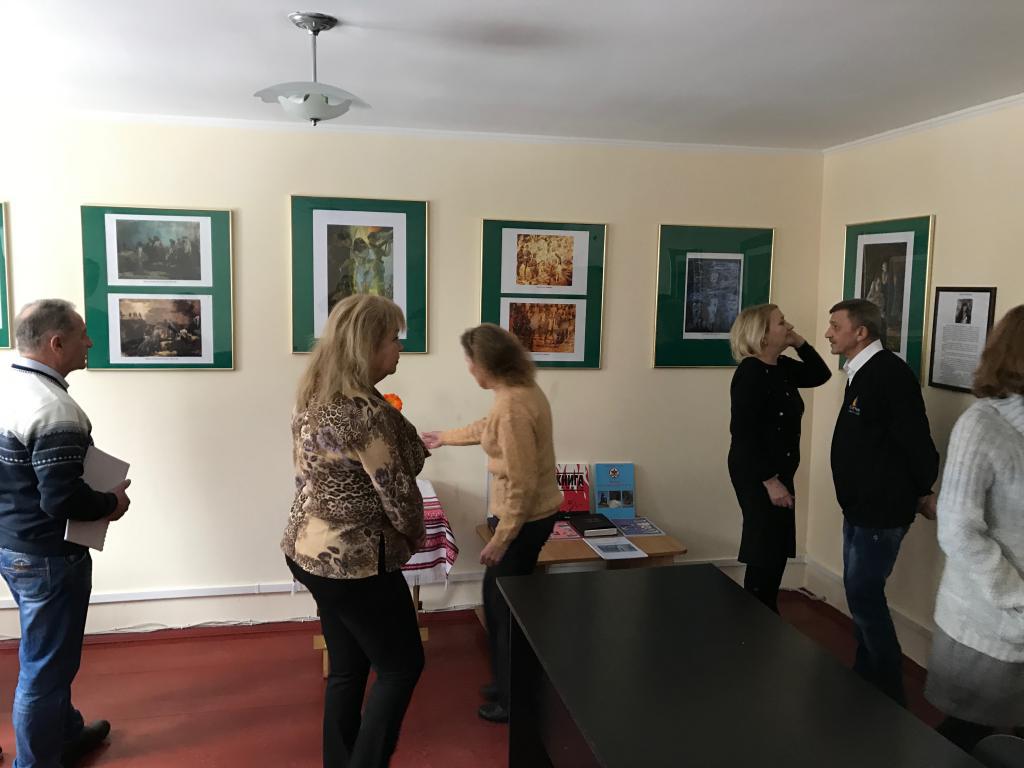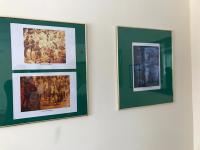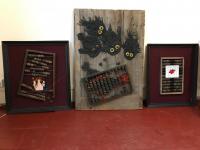January 27, 2017, in the office building of the National Historical and Memorial Reserve "Babyn Yar" the opening of the thematic exhibition "The Tragedy of the Holocaust in the Works of Artists" was held.
The generations that survived the horrors of mass destruction, the terrible tragedy of mankind - the Holocaust - little by little disappear. The fear gradually fades away ... Memory gradually calms down ... Instead, there is anxiety that soon it will become "history," meaning it will cease to be an unprecedented act of the destruction of millions of innocent people. We have to do everything to prevent the Catastrophe to be forgotten, because faith, history, tribulation, revival go alongside and create an overall picture of life ...
According to the decisions of the Stockholm Conference in 2000, all the countries of Europe, including Ukraine, which signed the Stockholm Declaration, celebrate the International Holocaust Remembrance Day on January 27.
The "Holocaust" comes from the Greek language (Greek Oλόκαυστον) - and consists of two parts (holos), which means "burned out" or "burned completely" and (kaustos), which means "immolation." Initially, the word "holocaust" had a religious undertone, but it was also used for centuries in relation to disasters and major disasters, mainly related to fires.
The Holocaust (the Shoah in Hebrew) is the name of a twelve-years period when the Nazis embodied their own schemes for the destruction of European Jewry. Starting in 1933, when Adolf Hitler became Chancellor of Germany, millions of Jews were the subject of humiliation, discrimination, slave labor, torture, and death. The Nazis and their accomplices in other countries have traced each Jew - from a famous specialist to a simple worker - to his relentless pursuit of a complete "solution to the Jewish question."
From the mid-1950s, the word Holocaust became universally applicable to the policy of the Nazis for extermination Jews and other peoples of Europe during the Second World War .
The Holocaust is the mass destruction of people, the terrible murder that took place in the middle of the twentieth century in Europe, the causes of which are still incomprehensible from the point of view of human, world culture, which is a significant problem of our time.
For the first time, this term was used by the future winner of the Nobel Peace Prize writer Eli Wiesel as a symbol of gas chambers and crematoria, extermination camps. It was not just the killing of a large number of people, but an attempt to destroy the whole nation. The racist theory of the Nazis was justified as genocide: Jews were declared "anti-race", "untermensch (subhuman creature)". "Not all victims were Jews, but all Jews were victims of Nazism," Eli Wiesel said.
In Ukraine, the Babyn Yar is a symbol of the Holocaust. Babin Yar is gradually becoming an important symbol of preserving the national memory of the Ukrainian people, of his Christian roots. Time can treat the wounds. But he is powerless to extinguish our memory. "The memory of the Holocaust is necessary in order for our children never to become victims, executioners or indifferent observers"
I.Bauer
"I never truly thought that I was destined to die. The need for creativity overwhelmed me. I was in exactly the same position as the people around me, and I was fully aware of how close they were to die. But I never thought that I would die too. I was in a different world, beyond reality. My task was to reflect what was happening around me. I was an eyewitness. "
This is how the artist Galina Olomuchka survived the Warsaw Ghetto, as well as the Auschwitz death camp. She was one of many artists who did not cease to work in ghettos and concentration camps. As a witness to the diverse and intensive cultural life that took place during the Holocaust, these works of art - mainly drawings or watercolors - represent invaluable information about the life of prison camp. They are historical documents, and the first people who realized their greatest importance were the artists themselves.
An important point of preserving the Holocaust in the memory of people and the necessity to prevent such a tragedy in the future is the artistic understanding of the Holocaust in literature, cinematography, music, fine arts.
Art increasingly refers to what was "yesterday", exploiting problems associated with history and memory. The artists who were in the concentration camps fixed the camp's reality. The art provided an opportunity for perpetuation. consolation, and also a sense of salvation of humanity. Postwar artists represented this traumatic story from the perspective of people who themselves had survived the hell of the camps or were direct witnesses. They created their works, which, on the one hand, testified to the degradation of man, and on the other hand, concerned the mourning and perpetuation of the dead. Many creators only after many years after the end of the war managed to touch this topic and talk about the most painful experience.
The artists turned to collective experiences (collective imagination and memory), therefore the question about the common, about memory, history, its design and its significance for the present began to appear.
The exhibition presents paintings by famous artists:
Vasil Ovchinnikov, Ilya Kleiner, Gernada Gold, Oksana Molozhanova, Oleg Prontenko, Serafima Volodina, Mykhailo Zvyagin, Oleksandra Burak, Aleksander Tikhomirov, Feliks Lemtsky, Chaim Goldberg, Oleksandr Bilozor.



















